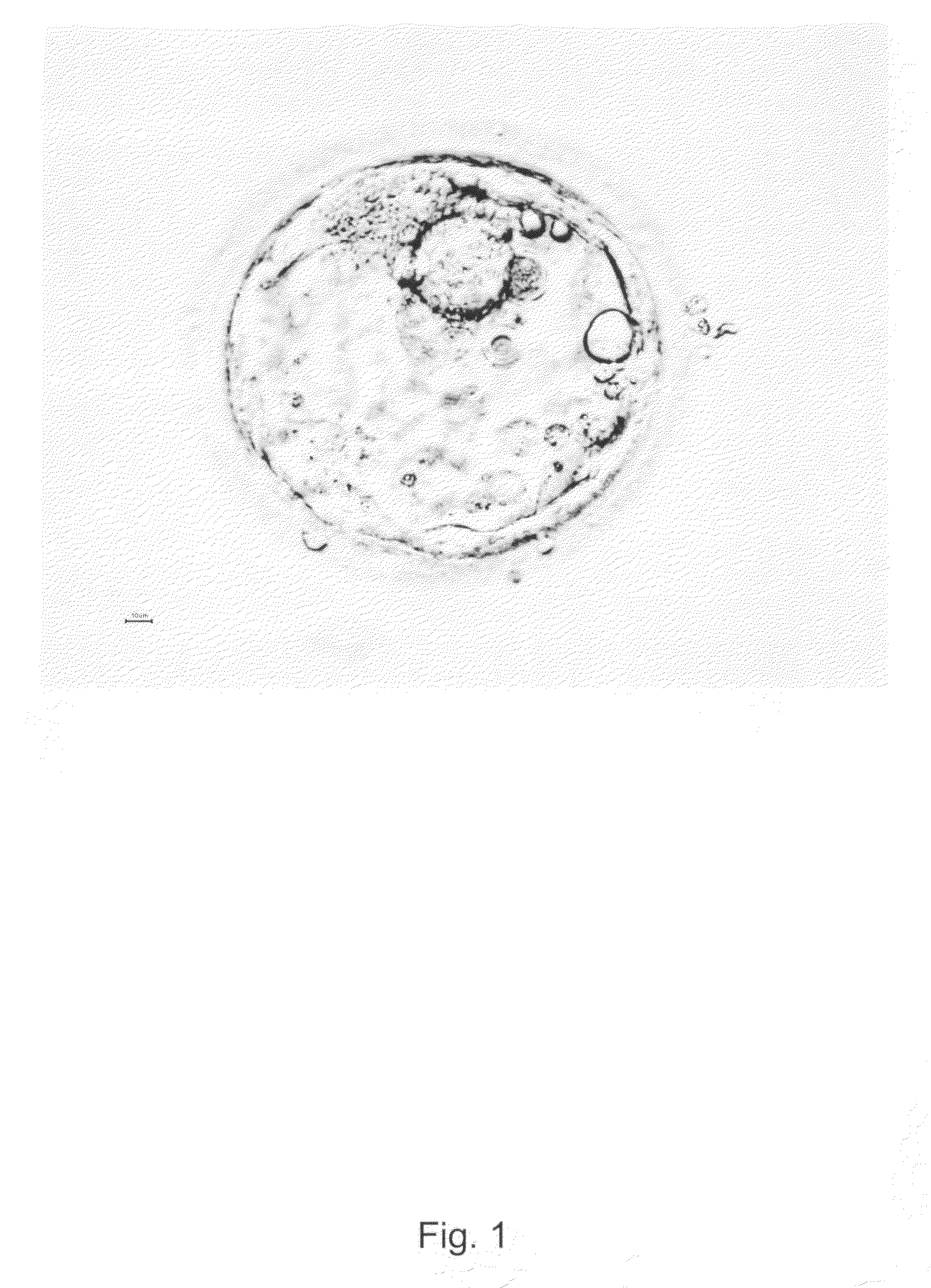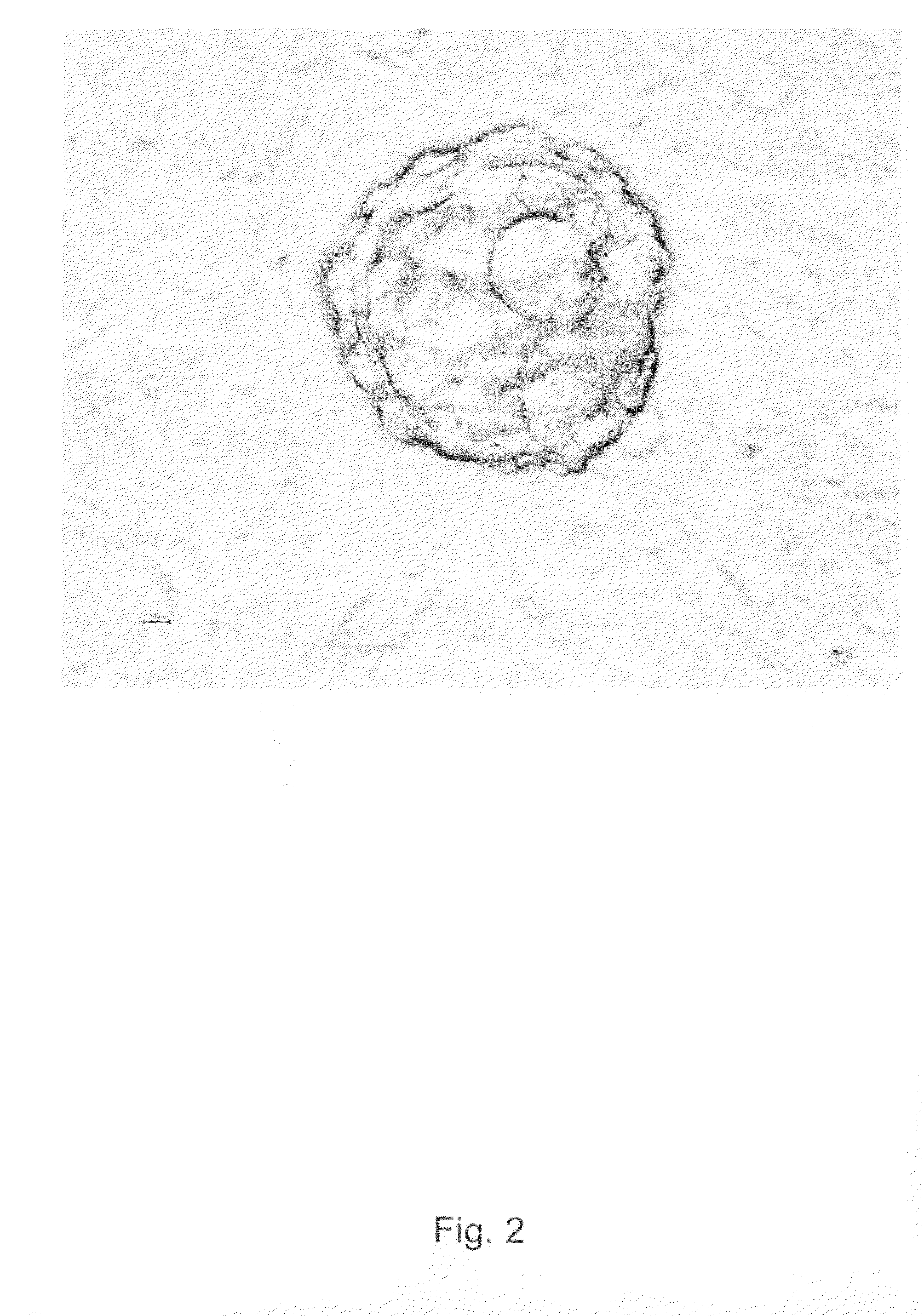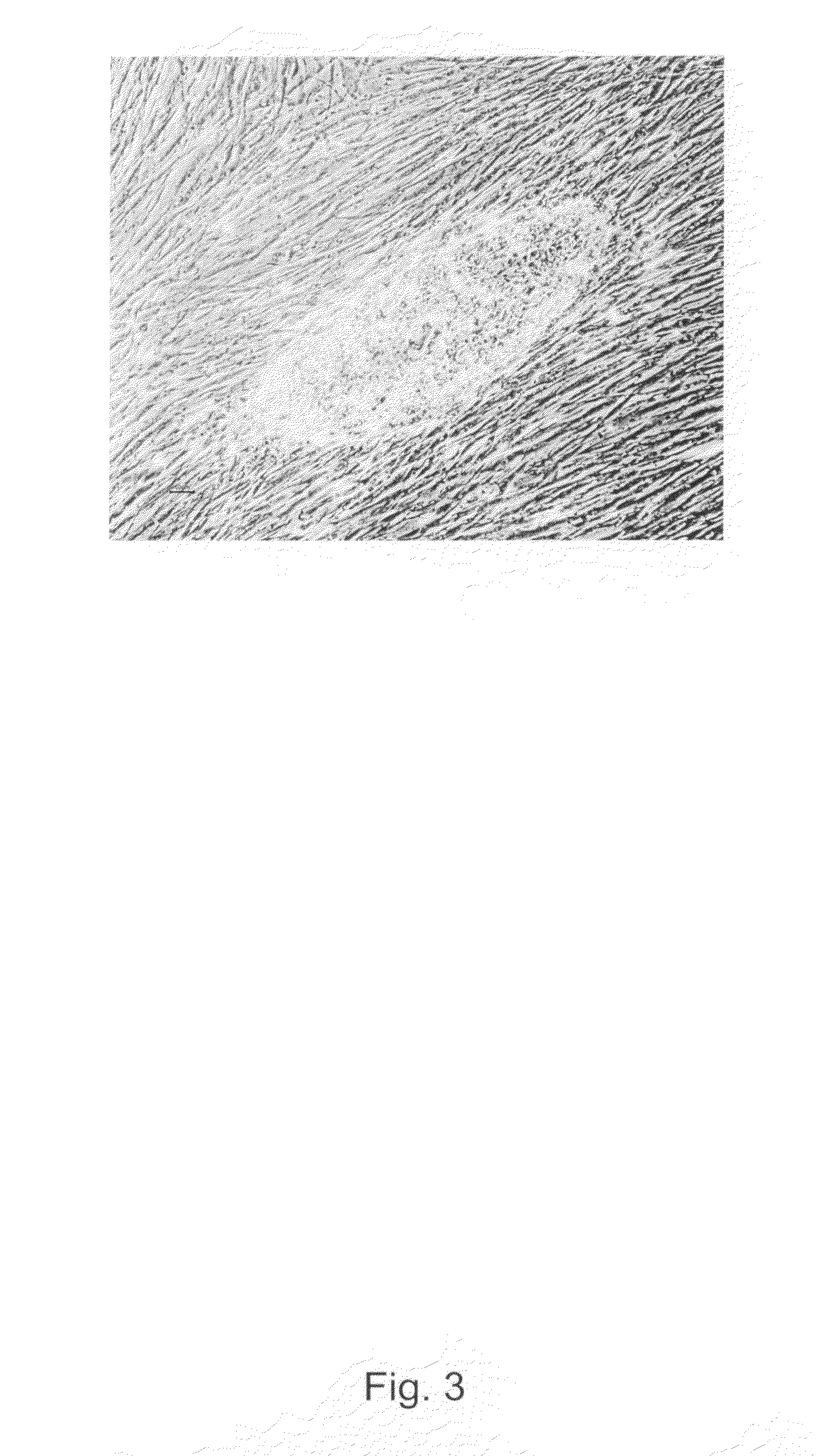Method for Obtaining Xeno-Free Hbs Cell line
a cell line and stable technology, applied in the field of stable hbs cell line, can solve the problems of increasing the risk of transferring non-human pathogens in any clinical application, increasing the likelihood of graft rejection, and the number of people suffering from disorders suitable for treatment by these methods,
- Summary
- Abstract
- Description
- Claims
- Application Information
AI Technical Summary
Benefits of technology
Problems solved by technology
Method used
Image
Examples
example 1
Obtaining and Culture Xeno-Free hBS Cells
[0206]Surplus human embryo from clinical in vitro fertilization (IVF) treatment was donated after informed consent and approval from the local ethics committee at Göteborg University. The donated embryo was cultured to blastocyst until the age of 5 days in media traditionally used in IVF treatment. The blastocyst was graded according to Gardner as 4AA and according to WO2003055992 as a blastocyst of quality A (expanded blastocyst with many distinct tightly packed ICM cells and a cohesive trophectoderm with many cells). The blastocyst was treated with acid Tyrode's solution (Medicult) solution (ready-to-use concentration) for 15-30 seconds in room temperature in order to remove the zona pellucida and parts of the trophectoderm (see FIGS. 1 and 2) before placing the inner cell mass cells onto mitomycin-C inactivated xenofree human foreskin fibroblast feeders in xeno-free serum containing a DMEM with osmolarity of around 270, supplemented with 2...
example 3
Feeder Layer Preparation
[0209]Prior to plating the xenofree human fibroblast feeders, the tissue cultured wells are coated with 0.1% recombinant human gelatin (Fibrogen) for a minimum of 1 hour at room temperature. Confluent monolayers of xenofree hFF003 (fifth to eight passage) cells grown in IMDM, 10% human serum and 1% penicillin-streptomyocin were then treated with mitomycin-C (Sigma) for 2.5 hours. Mitomycin-C treated feeders were plated on IVF wells (Becton Dickinson), 200 000 cells per 2.89 cm2 in a medium which was based on DMEM (as above) supplemented with 10% (v / v) human serum, 1% penicillin-streptomyocin, 1% Glutamax, 0.5 mmol / l β-mercaptoethanol and 1% non-essential amino acids (Gibco Invitrogen Corporation). Prior to the placing blastocysts with their inner cell mass cells and cells derived therefrom or hBS cells, the medium was changed to a DMEM (as above), now instead supplemented with 20% (v / v) human serum, 10 ng / mL human recombinant bFGF, 1% penicillin-streptomyocin...
PUM
| Property | Measurement | Unit |
|---|---|---|
| time | aaaaa | aaaaa |
| time | aaaaa | aaaaa |
| time | aaaaa | aaaaa |
Abstract
Description
Claims
Application Information
 Login to View More
Login to View More - R&D
- Intellectual Property
- Life Sciences
- Materials
- Tech Scout
- Unparalleled Data Quality
- Higher Quality Content
- 60% Fewer Hallucinations
Browse by: Latest US Patents, China's latest patents, Technical Efficacy Thesaurus, Application Domain, Technology Topic, Popular Technical Reports.
© 2025 PatSnap. All rights reserved.Legal|Privacy policy|Modern Slavery Act Transparency Statement|Sitemap|About US| Contact US: help@patsnap.com



